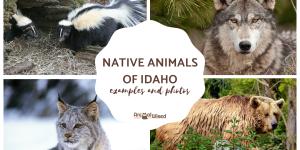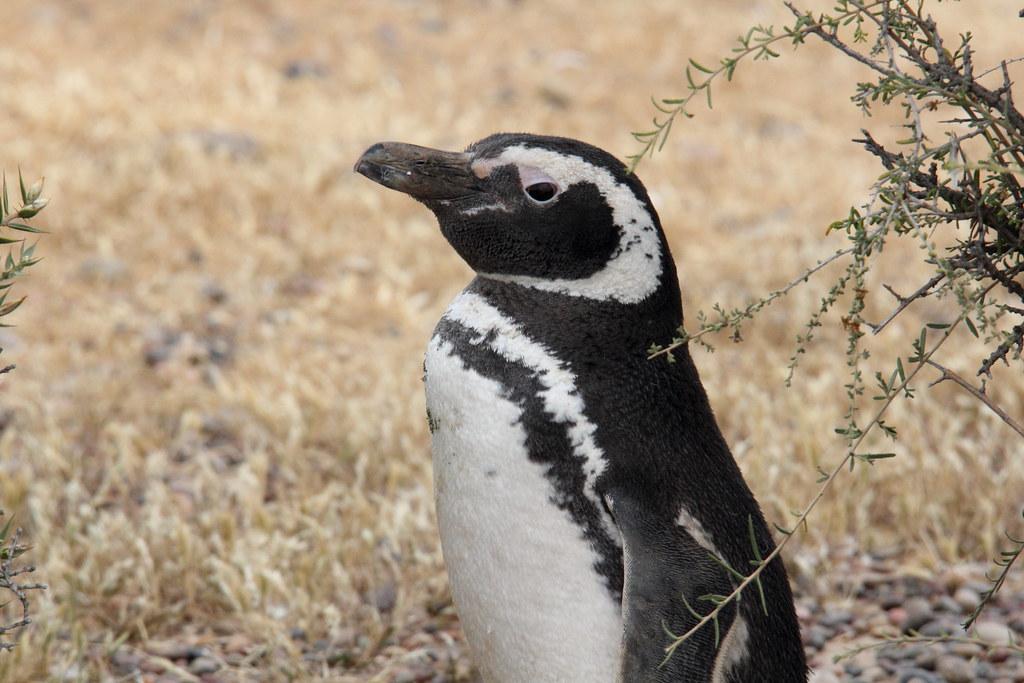Wildlife of Patagonia


Nestled in the southern reaches of Argentina and Chile, this vast region is home to a remarkable array of wildlife, each species adapted to thrive in its rugged and diverse landscapes. From soaring birds to marine giants, and from elusive predators to adorable herbivores, Patagonia is a sanctuary for nature enthusiasts and a haven for these fascinating creatures.
In this article by AnimalWised, we explore the diverse and vibrant biodiversity of Patagonia. We provide an in-depth description of some of its most iconic wildlife, while also addressing the critical conservation challenges that these remarkable animals confront.
- What is Patagonia?
- Guanaco (Lama guanicoe)
- Magellanic penguin
- Toninas
- Humboldt's hog-nosed skunk
- Darwin's Rhea
- Cougar
- Patagonian Mara
- Southern right whale
- Sea lions
- Darwin's Fox
- Huemul
What is Patagonia?
Patagonia, a vast and diverse region, can be broadly divided into two distinct zones: the littoral or coastal zone and the continental or Andean-Patagonian region.
The coastal zone stretches along the Atlantic Ocean on the Argentine side and the Pacific Ocean on the Chilean side.
The continental zone, on the other hand, encompasses the central regions, featuring predominantly desert climates that extend up to the majestic Andes Mountains. This area is characterized by lush humid forests and awe-inspiring glaciers.
Apart from the differences in landscape, the biodiversity of Patagonia exhibits variations between these regions.
The coastal zone is marked by a rich abundance of fish, birds, and aquatic mammals. The proximity to the ocean provides a thriving habitat for these marine creatures, offering ample food sources and suitable conditions for their survival. Species such as penguins, seals, sea lions, and various bird species grace the coastal areas of Patagonia, creating a vibrant and dynamic ecosystem.
In contrast, the continental zone of Patagonia showcases a different range of biodiversity. Here, terrestrial mammals and species adapted to freshwater environments, particularly lakes and lagoons, take center stage. This region is home to iconic animals like guanacos, foxes, armadillos, and the endangered huemul deer. Additionally, numerous bird species, including rheas and various waterfowl, thrive in the continental zone.
Despite being separate countries, Chilean and Argentine Patagonia share many microclimates and environmental conditions, leading to the presence of several species that inhabit both regions. These shared environments offer a unique opportunity to explore the animals of Patagonia from a "shared origin" perspective. By considering the fauna of both countries, we can gain a more comprehensive understanding of the remarkable wildlife that inhabits this extraordinary region.
1. Guanaco (Lama guanicoe)
The guanaco (Lama guanicoe) holds a prominent position among the iconic animals of Patagonia, and is often referred to as the "Patagonian llama".
This herbivorous mammal is native to South America and belongs to the camelid family, sharing its lineage with llamas, vicuñas, and alpacas. While guanacos can be found throughout the Andes Mountains, the Patagonian region boasts the highest concentration of these remarkable creatures.
Argentina is home to nearly 95% of the global guanaco population, spanning from the Puna region in the country's extreme north to Tierra del Fuego, its southernmost province. These graceful animals have adapted to thrive in the diverse landscapes of Argentina, displaying their resilience in the face of harsh environments.
The guanaco population in Chilean Patagonia, however, has experienced a worrisome decline of up to 75% in recent decades, primarily due to hunting. Recognizing the importance of conserving this species, guanacos are now protected in Chile, and efforts are being made to safeguard their future.
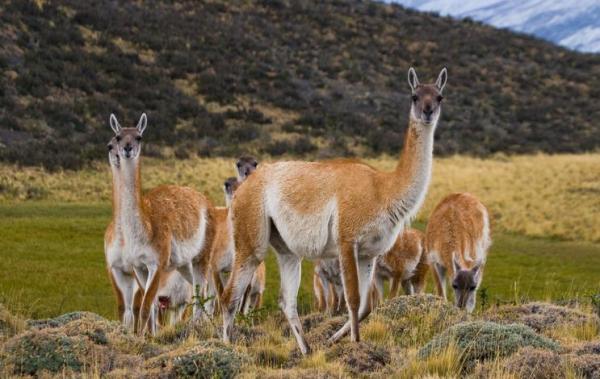
2. Magellanic penguin
Penguins are renowned flightless birds, and in the Patagonian region, several species can be observed, especially during their migratory seasons. Among the notable inhabitants of Argentine and Chilean Patagonia, the Magellanic penguin (Spheniscus magellanicus), also known as the Patagonian penguin, holds a prominent position.
Every year, Magellanic penguins journey to the Patagonian coast to establish nests with their partners, displaying remarkable monogamous behavior. In Chile, the Isla Magdalena National Park boasts one of the world's largest colonies of Magellanic penguins. Located in the Strait of Magellan, the park's Natural Monument "Los Pingüinos" provides a protected sanctuary where over 70,000 pairs of these penguins find a safe haven to breed and raise their offspring.
In Argentine Patagonia, Magellanic penguins predominantly choose the coastal regions of Chubut and Santa Cruz provinces to construct their nests. Notable colonies can be observed in the Valdés Peninsula, Punta Tombo, and Puerto Deseado.
The existence of these penguin colonies in both Chilean and Argentine Patagonia underscores the region's significance as a critical habitat for these remarkable creatures. Conservation efforts and the establishment of protected areas play a crucial role in preserving the nesting sites and ensuring the long-term survival of Magellanic penguins in Patagonia.
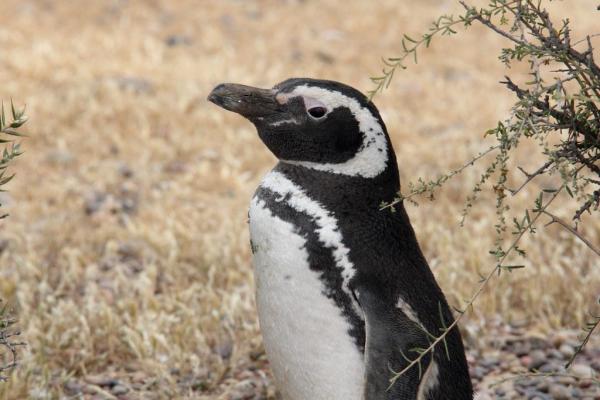
3. Toninas
In both Chile and Argentina, the diverse dolphin species that inhabit the cold waters of Patagonia are commonly referred to as "toninas." However, the southern dolphins and dusky dolphins are the most prevalent in Argentine and Chilean Patagonia.
Dusky dolphins, scientifically known as Fitzroy's dolphins (Lagenorhynchus obscurus), are generally smaller compared to other toothed cetacean species. However, there is a considerable variation in size among individuals of this species. In Chilean Patagonia, sightings often reveal the largest individuals, which can reach up to 2 meters in total length. Conversely, the smallest Fitzroy's dolphins, measuring approximately 1.7 meters in length, are found in Argentine Patagonia.
While there is no precise global population data available, intensive research conducted in the 1990s in the Patagonian region allowed for estimating a population of around 7,000 Fitzroy's dolphins in the southernmost parts of the American continent.
Southern dolphins (Lagenorhynchus australis), also known as Antarctic dolphins, are an endemic species of southern Patagonia. They primarily inhabit the frigid waters between Tierra del Fuego and Antarctica. These dolphins are typically around 2 meters in length and share similarities in appearance with Dusky Dolphins. However, their distinguishing feature is their dark grey faces, whereas Dusky Dolphins have predominantly white faces.
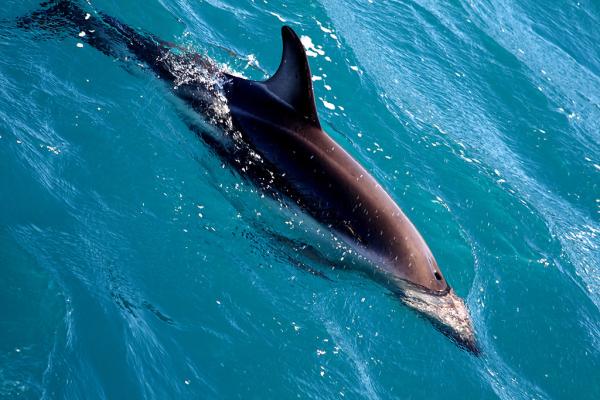
4. Humboldt's hog-nosed skunk
The Humboldt's hog-nosed skunk (Conepatus humboldtii), commonly referred to as the Patagonian chingue, is a small mammal belonging to the mephitid family. It primarily inhabits the southern part of the Patagonian region.
These diminutive skunks are opportunistic carnivores and exhibit nocturnal behavior. They rely on their strong sense of smell to hunt and locate prey. Their diet primarily consists of bird eggs and small mammals, which they can easily capture. Additionally, they supplement their nutrition by feeding on insects and worms, particularly during the winter when food sources are scarce.
The Patagonian chingue's ability to adapt its diet to the available resources contributes to its survival in the challenging Patagonian environment. Its efficient foraging skills and diverse food choices allow it to navigate periods of limited food availability and ensure its nutritional needs are met.
It's worth noting that the Humboldt's hog-nosed skunk plays a role in maintaining the ecological balance of its habitat by controlling populations of certain prey species and contributing to nutrient cycling through scavenging activities.
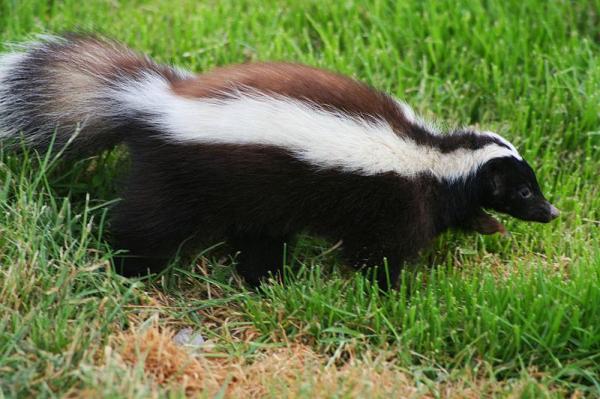
5. Darwin's Rhea
Rheas (Rhea) are flightless birds native to South America, sharing a resemblance to ostriches but smaller in size. Currently, two species of rheas are recognized:
- Common or American rheas (Rhea americana): They inhabit regions from central Brazil to northern Argentina and eastern Paraguay.
- Darwin's rheas or petisos (Rhea pennata): These rheas are primarily found in the steppes of Chilean and Argentine Patagonia.
Short rheas, as they are commonly known, are relatively small birds, standing at approximately 90 cm in height. They are known for their impressive running speed, capable of reaching speeds of up to 60 km/h. In the Patagonian region, they are referred to by various names such as short rheas, choice, Patagonian rheas, suri, and Andean rheas.
Unfortunately, the population of short rheas has significantly declined in recent decades, making them one of the endangered animal species in Patagonia. This decline is primarily attributed to hunting activities. Conservation efforts are crucial to protect and preserve the remaining populations of short rheas and prevent their extinction.
To learn more about Rheas, don't miss the following article that explains what a Rhea bird is.
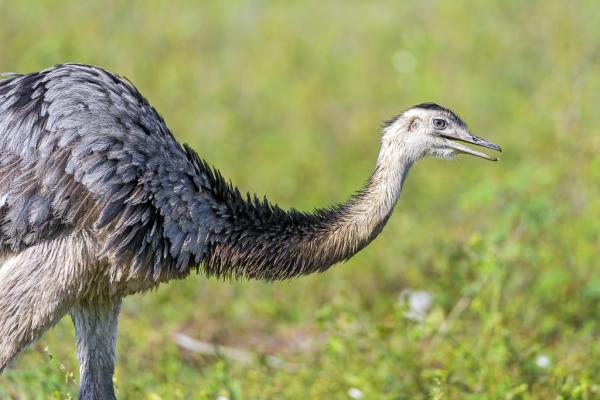
6. Cougar
The cougar (Puma concolor), often referred to as the "lions of America," is a prominent predator across the American continent. It encompasses six recognized subspecies, with five of them inhabiting South America.
In the Patagonian region, we encounter the southern cougar (Puma concolor puma or Puma concolor patagonica), which notably excels in adapting to cold climates.
In Chile, their population ranges from the central region to the Strait of Magellan, with a notable concentration in the Torres del Paine National Park. Similarly, in Argentina, they extend from the Center-West to South Patagonia. Unfortunately, their population has undergone a drastic decline primarily due to hunting, categorizing them as threatened or endangered species based on the respective regions.
Be sure to read this other article, where we discuss all the types of cougars.
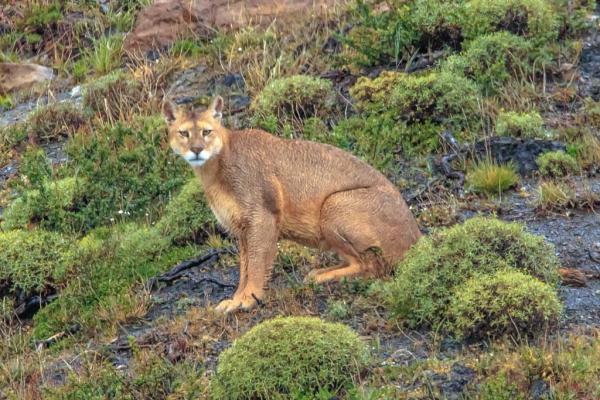
7. Patagonian Mara
The mara (Dolichotis patagonum), commonly known as the Patagonian hare, is a remarkable species of large rodents found primarily in Argentina, with a smaller population inhabiting the extreme southern regions of Chile. Although its popular name may suggest a connection to hares and rabbits, the mara actually belongs to the order Rodentia, which encompasses various rodents such as rats, squirrels, and capybaras.
What sets maras apart is their impressive size, making them the largest rodents in the world. They can reach a substantial body weight ranging from 8 to 15 kg, showcasing their robust build. In addition to their physical attributes, maras captivate attention for their unique mating behavior. Unlike many rodents that engage in promiscuous mating, maras are monogamous creatures known for their unwavering loyalty to their chosen partners.

8. Southern right whale
Every year, during mid-winter, the southern right whale (Eubalaena australis) makes its annual migration to the Valdés Peninsula, creating a spectacle that attracts thousands of tourists and researchers alike. This magnificent species arrives in the region to mate, coinciding with the arrival of spring.
Southern right whales are known for their impressive size and distinctive physical characteristics. They possess baleen plates instead of teeth, which they use to filter feed on tiny marine organisms such as krill and small fish. Their large, robust bodies and callosities (rough patches of skin) on their heads are notable features that aid in species identification.
The Valdés Peninsula, located on the coast of the Argentine province of Chubut, serves as a vital nature reserve and a prime location to witness the awe-inspiring presence of these majestic creatures. Visitors from all over the world eagerly gather on the mainland or embark on boats to observe the southern right whales up close.
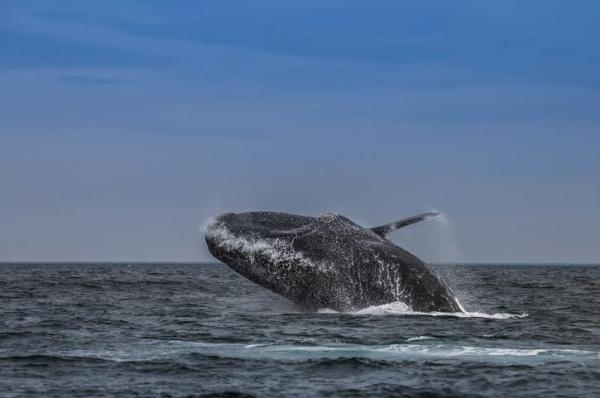
9. Sea lions
The Atlantic coast of Argentine Patagonia offers an ideal geography for the South American sea lions (Otaria flavescens) to thrive. These impressive marine mammals have adapted to take full advantage of the rocky formations and beaches nestled beneath the iconic cliffs that adorn the Patagonian coast. Here, they find a perfect resting spot, basking in the sun's warmth, while also having the ability to swiftly dive into the water to swim, hunt, or escape from their primary natural predator, the killer whales.
While South American sea lions can be spotted along almost the entire Argentine Atlantic coast, as well as in certain locations bathed by the Pacific Ocean in Chile and Peru. These colonies provide a rich and fertile environment for the sea lions, offering plentiful food sources and a safe haven for breeding and raising their young.
The Valdes Peninsula, in particular, attracts scientists, researchers, and nature enthusiasts who are captivated by the opportunity to observe and study these charismatic marine creatures up close. The colonies found in this region offer valuable insights into the behavior, biology, and conservation of South American sea lions, contributing to our understanding of their vital role within the marine ecosystem.
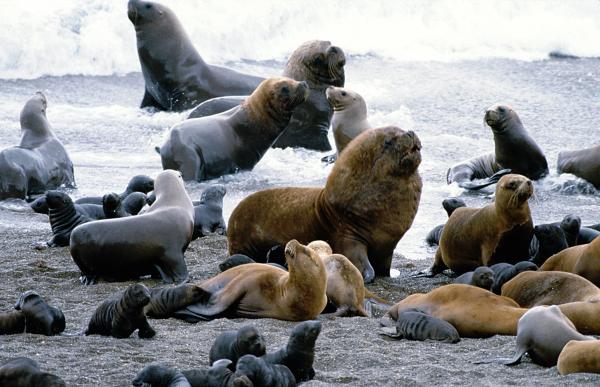
10. Darwin's Fox
The Darwin's fox (Lycalopex fulvipes) is a remarkable canid species that is endemic to southern Chile, where it is commonly known as the chilote fox.
This small fox is characterized by its compact size, standing at approximately 25 cm tall at the withers, and weighing between 2.5 and 4 kg on average. Its fur typically displays a dark gray or black coloration, with reddish spots adorning its legs and ears, sometimes leading to confusion with the gray fox or chilla.
Tragically, the Darwin's fox is classified as one of the most endangered animals on both the IUCN Red List and by Greenpeace. Today, their population is primarily restricted to Chiloé Island and the Nahuelbuta Mountain Range, although they can also be found in select national parks throughout Chilean Patagonia.
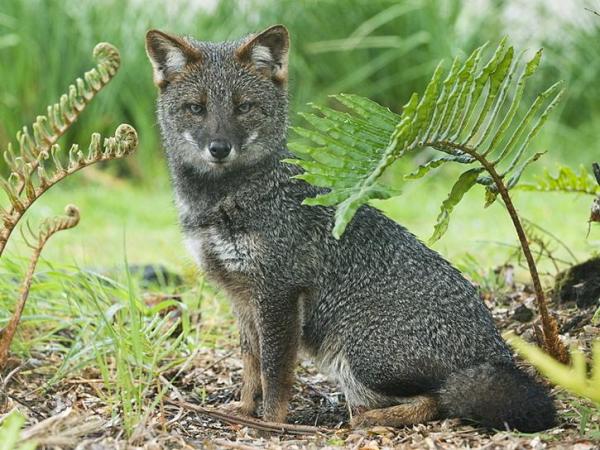
11. Huemul
The huemul (Hippocamelus bisulcus) holds such significance in Chile that it is considered a national symbol and is featured in the country's coat of arms. This species of deer is native to the Andean regions of the Southern Cone of South America, primarily inhabiting the forests of Chilean and Argentine Patagonia. In Argentina, it is equally valued and has been declared a national monument since the 1990s.
Sadly, the huemul is currently facing the threat of extinction, primarily due to indiscriminate hunting spanning over a century. The population of huemul in the Patagonian region is estimated to be less than 2000, with a decline of half their numbers over the past 500 years.
Recognizing the urgency of conservation, Chile has implemented protective measures through Law 19,473, which prohibits the hunting, possession, capture, and commercialization of huemul. Consequently, it stands as one of the most safeguarded species in the country.

The pudús (Pudu) are a genus of small-sized deer native to the Andean regions of South America. There are currently two recognized species of pudús:
- Northern Pudú (Pudu mephistophiles): This species primarily inhabits the northern regions of South America, including Peru, Venezuela, Ecuador, and Colombia.
- Southern pudú (Pudu puda): The southern pudú is found exclusively in the Andean forests of south-central Chile and western Argentina.
Although not as widely recognized as some other Patagonian animals, the pudú stands out for being the smallest known species of deer. Their population appears to be most abundant in the Chiloé Archipelago, which is part of the lake region in Chilean Patagonia. Pudús can also be found in Chile, particularly in the Araucanía and Aysen Regions. In Argentina, the largest number of individuals is found in Lanin National Park, located in the province of Neuquén.

If you want to read similar articles to Wildlife of Patagonia, we recommend you visit our Facts about the animal kingdom category.
- Baldi, RB, Acebes, P., Cuéllar, E., Funes, M., Hoces, D., Puig, S. & Franklin, WL 2016. Lama guanicoe. The IUCN Red List of Threatened Species 2016: e.T11186A18540211. http://dx.doi.org/10.2305/IUCN.UK.2016-1.RLTS.T11186A18540211.en. Downloaded on 21 June 2019.
- BirdLife International 2018. Spheniscus magellanicus. The IUCN Red List of Threatened Species 2018: e.T22697822A132605485. http://dx.doi.org/10.2305/IUCN.UK.2018-2.RLTS.T22697822A132605485.en. Downloaded on 21 June 2019.
- Alafaro-Shiguieto, J., Crespo, E., Elwen, S., Lundquist, D. & Mangel, J. 2019. Lagenorhynchus obscurus. The IUCN Red List of Threatened Species 2019: e.T11146A50362028. http://dx.doi.org/10.2305/IUCN.UK.2019-1.RLTS.T11146A50362028.en. Downloaded on 21 June 2019.
- Heinrich, S. & Dellabianca, N. 2019. Lagenorhynchus australis. The IUCN Red List of Threatened Species 2019: e.T11143A50361589. http://dx.doi.org/10.2305/IUCN.UK.2019-1.RLTS.T11143A50361589.en. Downloaded on 21 June 2019.
- Emmons, L. & Helgen, K. 2016. Conepatus humboldtii. The IUCN Red List of Threatened Species 2016: e.T41631A45210677. http://dx.doi.org/10.2305/IUCN.UK.2016-1.RLTS.T41631A45210677.en. Downloaded on 21 June 2019.
- BirdLife International 2016. Rhea americana. The IUCN Red List of Threatened Species 2016: e.T22678073A92754472. http://dx.doi.org/10.2305/IUCN.UK.2016-3.RLTS.T22678073A92754472.en. Downloaded on 21 June 2019.
- BirdLife International 2018. Rhea pennata. The IUCN Red List of Threatened Species 2018: e.T22728199A132179491. http://dx.doi.org/10.2305/IUCN.UK.2018-2.RLTS.T22728199A132179491.en. Downloaded on 21 June 2019.
- Nielsen, C., Thompson, D., Kelly, M. & Lopez-Gonzalez, CA 2015. Puma concolor (errata version published in 2016). The IUCN Red List of Threatened Species 2015: e.T18868A97216466. http://dx.doi.org/10.2305/IUCN.UK.2015-4.RLT




